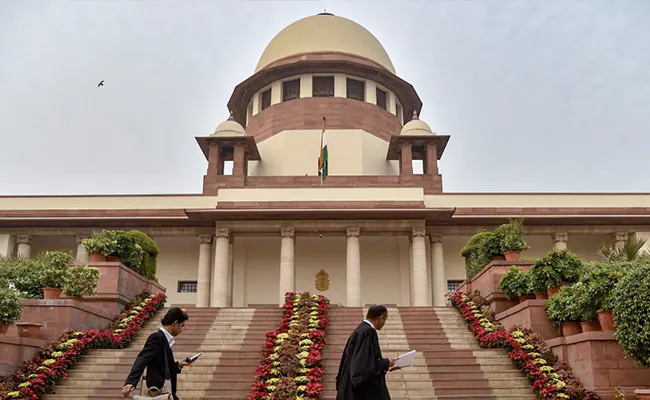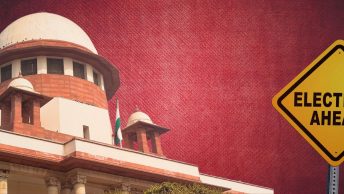In Part I, the authors laid down the theoretical basis behind the need to maintain the balance between legal and political constitutionalism in India, as a guide for constitutional interpretation within the Indian structure of separation of powers. In Part II, the authors use this framework to demonstrate that the Indian Supreme Court (‘SC’) in Anoop Baranwal has disrupted this balance by identifying a ‘gap’ in the law where there was no vacuum. Further it is shown that the decision undermines the role of the legislature by bringing about a stop-gap measure, which operates as a temporary constitutional amendment.
Identifying a ‘Gap’ where there was none
In the absence of a legal vacuum regulating such appointments, the decision of the SC in Anoop Baranwal is not simply another ‘gap-filling exercise’ but instead an instance of ‘judicial creativity’. Such ‘gap-filling’ would be justified as long as it is in line with legislative intent, based on consecrated principles and not ‘out of thin air’, as highlighted by Justice Cardozo. This finds relevance in the Indian context as well, with the doctrine of silence, having been cited by the SC as a justification for courts to fill the gaps in the Constitution by issuing safeguards and guidelines to bring the Constitution in line with contemporary times.
Such an approach is also in line with Article 142 of the Constitution, which was invoked by the SC to modify the appointment procedure in this case. The provision allows the Court to issue directions to ensure ‘complete justice’ to the parties. Previously, it formed the justification for the Court to issue guidelines in cases dealing with protection from sexual harassment in the workplace (Vishaka Guidelines), where, as argued above, there was a complete legislative vacuum, compelling the SC to formulate guidelines which would eventually become law. This trend of formulating legislative guidelines due to a total legislative lacuna was also followed in cases dealing with preventing the malpractices in adoption of children by foreign parents (John Clements Case), guidelines to tackle ragging in educational institutions (University of Kerala v. Councils Case), and the expedient scrutiny of social status certificates for Scheduled Castes/Scheduled Tribes (Kumari v. Additional Commissioner Case). In such cases, the SC was justified in laying down those norms, in light of their primary prerogative to do justice to the parties because of a vacuum or a silence in the legal framework, not only in the form of a legislation but also any constitutional framework.
However, this justification does not extend to the appointment procedure for the ECI, as there is an existing constitutional scheme regulating such appointments, as clearly laid out in Article 324(2) of the Constitution. The Constitution provides for the manner of appointment by entrusting the President with such power, till the Parliament enacts a law regulating the same. Here, it is pertinent to note that this arrangement has in fact been praised by Ackerman in his conception of the New Separation of Powers, as an instance of protecting the independence of the Indian democratic setup. By entrusting the President with the power to appoint the Chief Election Commissioner, instead of the Prime Minister, it maintains a balance between the executive and the ECI. However, in the absence of an actual lacuna or silence in the legal framework behind such appointments, the Court’s rationale behind laying down legislative guidelines as seen in the aforementioned cases, does not apply.
As an alternative, the authors argue that the SC ought to have focused on establishing overarching principles for the appointment procedure, in line with the intended objective: to secure the independence of the ECI. Such principles could draw upon previous decisions of the SC regarding fair procedures and the prevention of bias to minimise executive interference in such appointments. These principles could then be taken into consideration by the legislature in the debate and deliberation surrounding the enactment of a law amending the existing procedure. This would be in stark contrast to the judiciary assuming the legislative role by in turn designating the task of creating any such a mechanism to the legislature, the appropriate body. Such debates would further aid the legislature in reaching a carefully negotiated solution to formally amend the existing constitutional provision and by aligning them with the principles laid out by the SC.
Additionally, such an alternative approach would also help maintain a balance between legal and political constitutionalism as argued in Part I, with the legislature remaining the primary law-making body and the judiciary playing its role in scrutinising legislation to ensure its alignment with core constitutional values. Moreover, this would also ensure that it does not lead to a situation when there could potentially be two existing laws on the same issue – a constitutional provision that has not been formally struck down and a stop-gap mechanism that has been issued by the SC.
Bypassing the Legislative Supermajority: Amending the Constitution under the garb of Judicial Review
By extending the argument of gap-filling to the ambit of constitutional review, we can observe that by formulating an appointment mechanism for the ECI, albeit temporary in its scope, the SC has indirectly brought in a constitutional amendment. Through its decision, the SC attempts to remove the term ‘President’ from Article 324(2) of the Constitution and substitute it with its alternative appointment mechanism, until the Parliament passes a law on the same. However, by doing so, it essentially bypasses the legislative supermajority required to pass a constitutional amendment. Supermajority requires the assent of 2/3rd of the members present and voting in both Houses of the Parliament. Skirting this process compromises on the high standard of democratic consensus required to bring forth such an amendment. Such circumvention of the constitutional amendment procedures by the judiciary, which is in itself considered an ‘anti-democratic’ institution (as referred in Chapter(s) 1-2 here), has grave implications for the democratic setup of the country. This is because unlike the legislature, which sources its legitimacy from the people through elections, the judiciary on the other hand, is counter-majoritarian by its very nature. The power of non-democratically elected judges to formally alter the text of the Constitution must be questioned.
By bringing about an amendment to Article 324(2) of the Constitution, which requires a higher degree of democratic consensus, political negotiation and mutual compromise in lieu of the supermajority required (refer to the chapter titled ‘Constitutional Amendment’ by Madhav Khosla, here), the SC’s decision threatens the democratic setup of the country. Moreover, since the Indian Constitution is considered to be for the people, the only institution that must be entrusted with the power to amend the Constitution is the legislature, since it derives its power from the people themselves. The judiciary’s role in this regard is limited to scrutinising the validity of such constitutional amendment, and its power is limited to striking down such an amendment, but this does not extend to the power of bringing about an amendment by itself, which has been explicitly conferred to the legislature. An extension of the judiciary’s role at the cost of the legislature, as seen in the present case, would also go against Ackerman’s tenets, since it would diminish rather than enhance the democratic functioning of the country.
Moreover, such an exercise of the judiciary usurping legislative power would undermine the notion of ‘professional competence’ which is another tenet of ‘functional’ separation of powers as recognised by Ackerman. As per this notion, Ackerman argues that the justification for the separation of powers also lies in the knowledge, expertise and competence of the institution performing the function. Here, as argued above, the function of bringing about a constitutional amendment falls directly within the ‘professional competence’ of the legislature which can only be discharged through fulfilling the higher threshold of consensus building.
Further, it is argued that in the course of ‘interpreting’ the existing law, the line demarcating the role of the judiciary to merely ‘declare’ the law has been crossed by engaging in an act of ‘judicial creativity’. This ‘judicial creativity’ has led to ‘amending’ the law instead of interpreting it, which raises several questions on the distinction of powers between the various pillars of democracy. Instead, an approach of ‘interpretive reasoning’ as discussed by Sudhir Krishnaswamy (referred in Chapter 5 here), should have been taken by the SC in this case, instead of usurping the legislature’s role. As per this approach, to perform its function of ‘interpreting’ the Constitution, the court must simply provide the meaning of constitutional provisions and provide justifying reasons to bring such provisions closer to its intended purpose.
Such ‘interpretive reasoning’ would be reflected in the alternative approach proposed above, as it merely restrains itself to the ambit of Article 324 of the Constitution and suggests ways in which it can be brought closer to the core constitutional values driving the provision, which would be to secure the independence of the ECI. This reasoning, in the form of obiter dicta, instead of a temporary binding amendment, would have been the preferred approach, providing the legislature the opportunity to formally amend the provision in accordance with the constitutional requirements of Article 368. Thus, it is argued that by formally altering the text of the Constitution, the judiciary has in fact, gone beyond its scope and has in effect, brought about an amendment to the Constitution, without the backing of the democratic will of the people to support the same.
Conclusion
In this article, the authors set out to examine whether the SC’s decision in the Anoop Baranwal case is in consonance with the judiciary’s role in the Indian model of separation of powers. It is argued that in attempting to interpret the existing constitutional provision under Article 324(2) of the Constitution, the SC has ‘overstepped’ its role in simply scrutinising the existing arrangement, and has altered the balance between the legal and political constitutionalism that is required in Indian democracy.
The dangers of such judicial overreach become all the more paramount when the SC attempts to identify a ‘gap’ in the existing constitutional structure, where there was none and in turn, goes on to amend Article 324(2) of the Constitution, which is the sole prerogative of the legislature. In light of this, the authors have attempted to present an alternative, which would be in line with the SC limiting itself to ‘interpreting’ the existing constitutional mandate under Article 324(2), instead of amending the same. This would ensure that the balance between legal and political constitutionalism is upheld with the SC performing its function of ‘interpretation’, leaving the law-making process via deliberative consensus-building in the hands of the legislature.
[Ed Note: This article has been edited by Archita Satish and published by Harshitha Adari from the Student Editorial Team]






